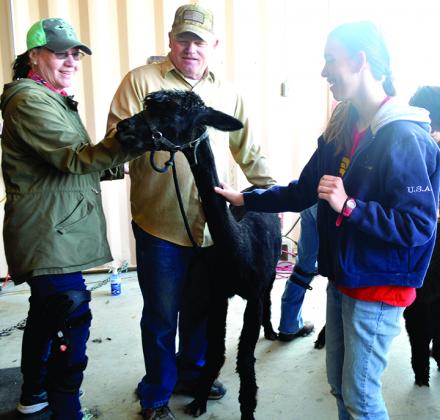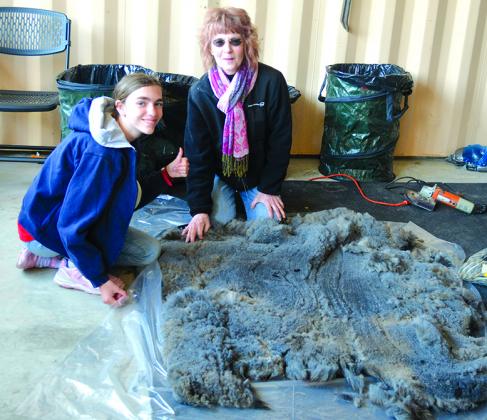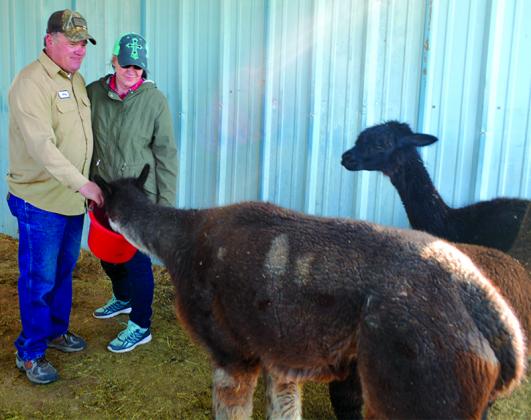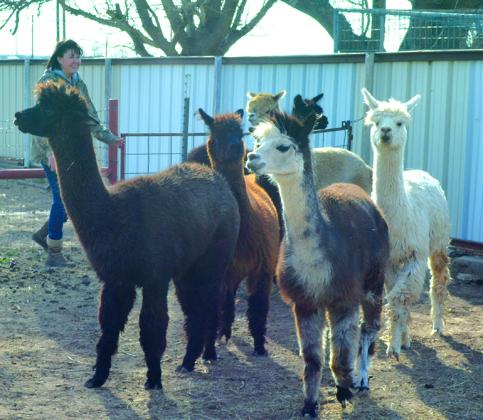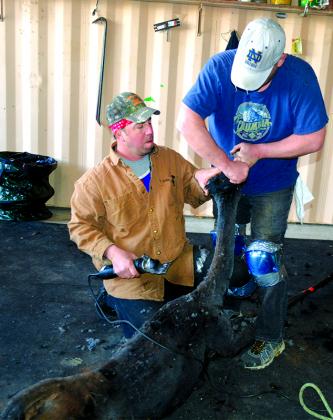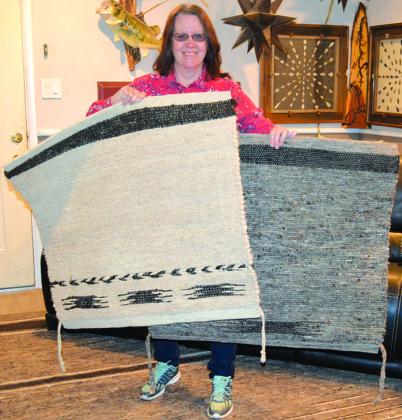Scurry County’s only alpacas get fleeced
Because alpacas are unique and the textiles produced from their fleece are in high demand, they provide a financial opportunity for breeders
One Scurry County family has joined the market and is currently raising eight alpacas.
On Thursday, Linda and Jerry Englert opened their ranch for the alpacas to be sheared. Jamie Jones of Indiana travels across the country shearing alpacas and recently made his first stop in Scurry County.
Since alpacas originate in Peru and are known to travel in herds along the Andes Mountains, American owners have to shear them annually to avoid health complications, Jones said.
“This is a once a year thing,” Linda Englert said. “Just like sheep, alpacas are sheared to remain healthy. They can overheat in the summer because they do not sweat.” It’s an extremely humane act. We love them and keep them healthy so we can breed them and sheer them once a year.”
Shearing season is typically anytime between March and June. Another reason farmers look forward to shearing season is the financial benefit.
The fiber is sent to mills to be spun into yarn. The fleece is used for sweaters, blankets, rugs, saddle blankets and more, Jones said.
Linda Englert said alpacas are the “sweetest animals” she has ever raised.
“I just love them so much, especially when they are babies,” she said. “They are just loving animals.”
Linda Englert said her herd started in 2012 when she purchased three alpacas in Lubbock.
The Englerts were not the only breeders to have their alpacas sheared on Thursday. Crane’s Susan Frank brought part of her herd.
“I was flipping through a magazine and I saw a picture of an alpaca and I just told my husband, ‘Oh my gosh I have to have one,’” Frank said. “Soon after, 9/11 happened, so we thought now or never because you never know what can happen in life.”
Frank said she also started with three alpacas and she even traveled the country to attend shows focusing on raising alpacas.
“They really bring me peace,” Frank said. “Sometimes I just go outside and sit in the middle of my alpacas and listen to them hum. It can make you forget how hectic life can be.”
For National Alpaca Day, which is Sept. 26, the Englerts will host the first alpaca show in Scurry County.
They will open their farm for the public to view their herd and to buy merchandise.
“I think (alpaca farming) is a great family thing to do,” Frank said. “When you expose kids to livestock, you expose them to responsibility and caretaking. It takes them away from electronics and just gets them to be outside more. You can really build an emotional bond with alpacas.”


